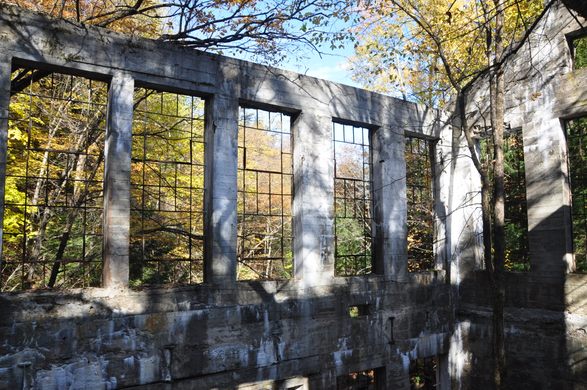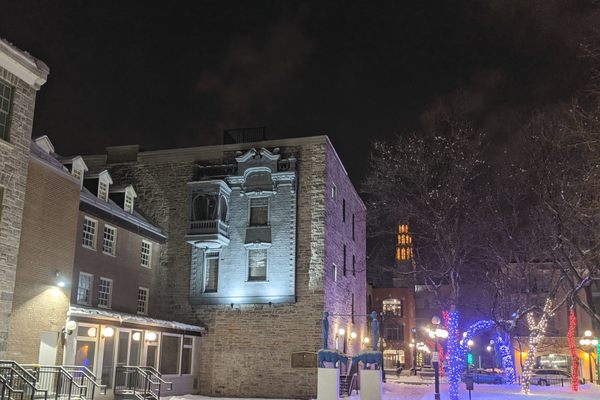Carbide Willson Ruins
The remains of a paranoid inventor's hidden workshop lie in beautiful ruins amidst a Canadian park.
Thomas “Carbide” Willson made a name (and a terrific nickname) for himself in 1892 when he essentially created the process by which we create calcium carbide, an important industrial chemical. But as he continued trying to create chemical innovations, Willson built the summer home/laboratory which still stands in Gatineau Park (although as a hollowed-out ruin).
Some say that Willson built his summer home and other structures deep in the woods due to a paranoid fear of competitors stealing his ideas, yet whatever the reason, the multi-story structure was lavish for the time. The home was built later in his career after Willson’s interests had shifted towards innovations in the fertilizer industry. With the use of his new base of operations, he began focusing on ways to cram more phosphoric acid into the product. As his need for more facilities increased, he added more and more to the estate. Eventually, Willson even built his own experimental power station at nearby Meech Lake. The station was known to raise and lower the lake’s water level dramatically while in use and was reviled by the locals. This unpopularity did not seem to faze Willson, but still, his ambition eventually began to outstrip his finances.
After putting all of his finances into the Meech Lake estate, Willson was still unable to meet the production demands of his new process. Willson was soon bankrupt and the estate fell into the hands of one of his investors who did not have any real interest in maintaining the house, and simply let it fall into ruin.
Willson died of a heart attack in 1915, but his grand dream of a sylvan home and lab still stands in what is now Gatineau Park. The dead-eyed buildings still draw a number of photographers and sightseers although very little of the bucolic site speaks to its history of acids, chemicals, and fertilizers.
Know Before You Go
Follow the directions to Meech Lake in Gatineau Park. Just before reaching the lake, there is a parking lot (O’Brien Beach Parking Lot (P11))on the right-hand side. Park there and take the trail leaving the parking lot. From there it's about a 30-minute walk to the ruins.
























Follow us on Twitter to get the latest on the world's hidden wonders.
Like us on Facebook to get the latest on the world's hidden wonders.
Follow us on Twitter Like us on Facebook